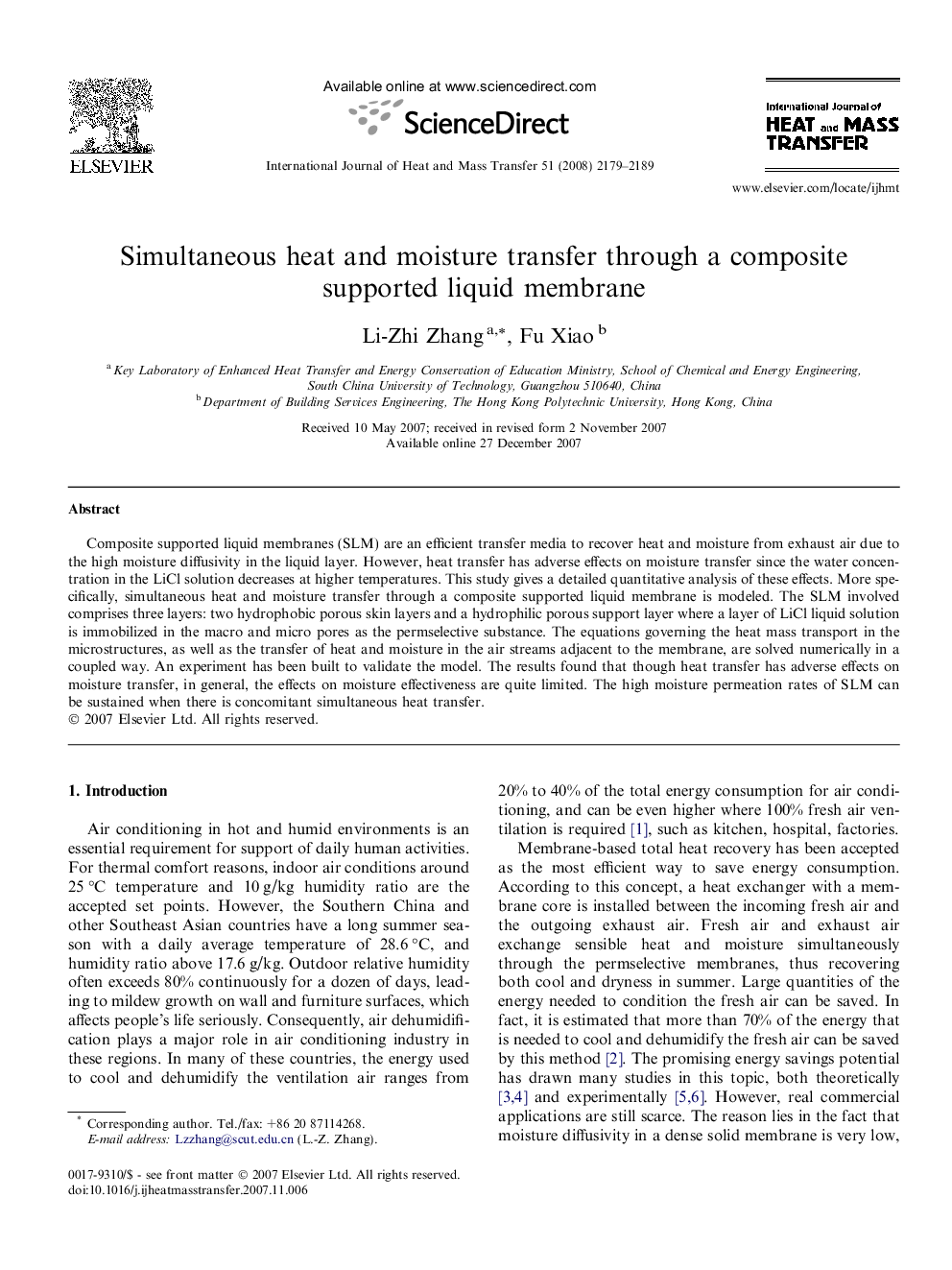| Article ID | Journal | Published Year | Pages | File Type |
|---|---|---|---|---|
| 662643 | International Journal of Heat and Mass Transfer | 2008 | 11 Pages |
Composite supported liquid membranes (SLM) are an efficient transfer media to recover heat and moisture from exhaust air due to the high moisture diffusivity in the liquid layer. However, heat transfer has adverse effects on moisture transfer since the water concentration in the LiCl solution decreases at higher temperatures. This study gives a detailed quantitative analysis of these effects. More specifically, simultaneous heat and moisture transfer through a composite supported liquid membrane is modeled. The SLM involved comprises three layers: two hydrophobic porous skin layers and a hydrophilic porous support layer where a layer of LiCl liquid solution is immobilized in the macro and micro pores as the permselective substance. The equations governing the heat mass transport in the microstructures, as well as the transfer of heat and moisture in the air streams adjacent to the membrane, are solved numerically in a coupled way. An experiment has been built to validate the model. The results found that though heat transfer has adverse effects on moisture transfer, in general, the effects on moisture effectiveness are quite limited. The high moisture permeation rates of SLM can be sustained when there is concomitant simultaneous heat transfer.
